Philippines Hybrid Rice Seed Market Size
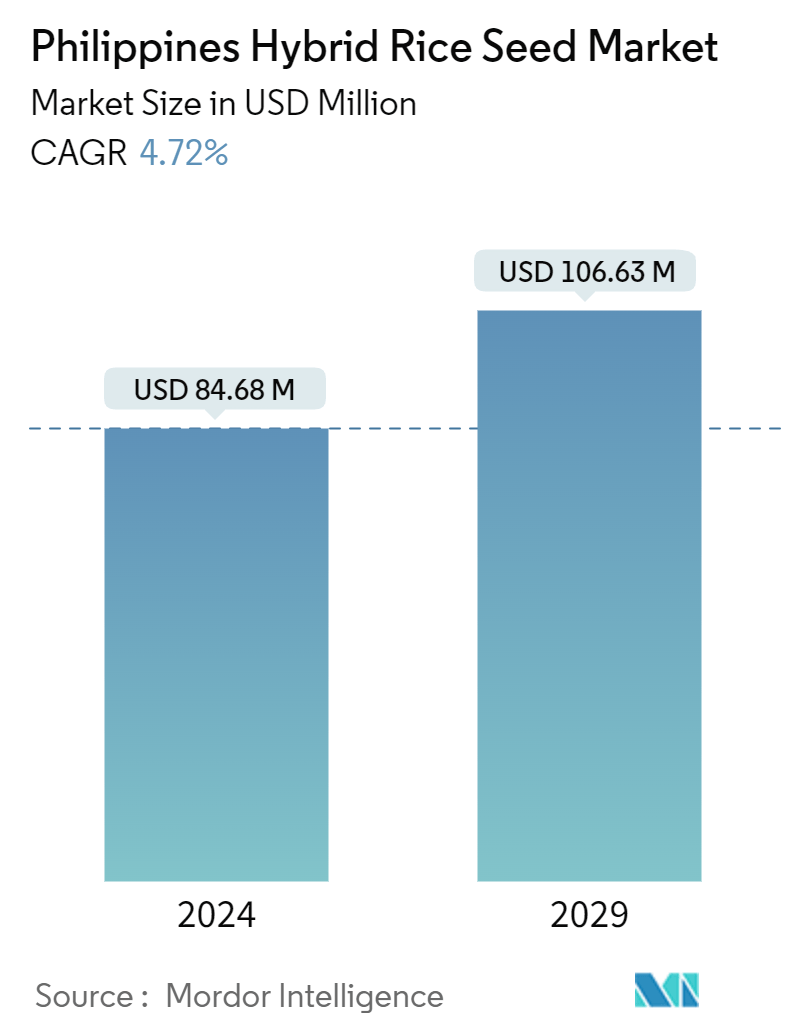
| Study Period | 2019 - 2029 |
| Base Year For Estimation | 2023 |
| Market Size (2024) | USD 84.68 Million |
| Market Size (2029) | USD 106.63 Million |
| CAGR (2024 - 2029) | 4.72 % |
| Market Concentration | High |
Major Players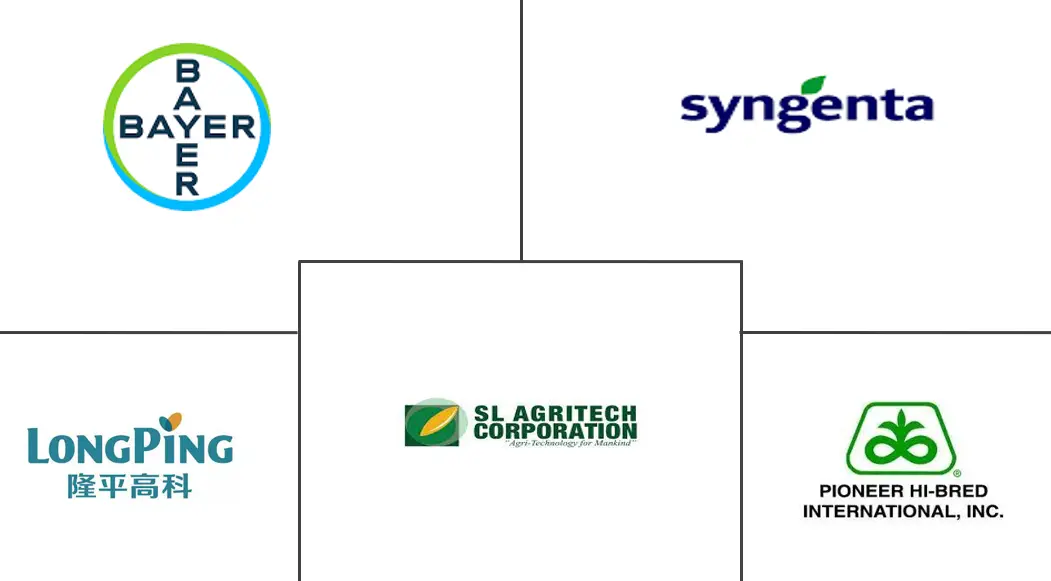
*Disclaimer: Major Players sorted in no particular order |
Philippines Hybrid Rice Seed Market Analysis
The Philippines Hybrid Rice Seed Market size is estimated at USD 84.68 million in 2024, and is expected to reach USD 106.63 million by 2029, growing at a CAGR of 4.72% during the forecast period (2024-2029).
- Rice is the single most valuable agricultural crop in the Philippines and is a significant source of income for millions of Filipino farmers. Increasing demand for rice as a staple food among consumers, favorable government initiatives, and growing adoption of modern rice varieties in the Philippines are anticipated to remain good factors for market growth. Additionally, industry growth is positively influenced by technologically advanced agricultural practices that have eventually improved yield and strengthened the supply.
- Along with this, the Philippines government launched a national hybrid rice program. The program aims to utilize hybrid rice technology as a new approach to cumulative national rice production, increase the productivity and competitiveness of Filipino farmers over the short term, and reach national rice self-sufficiency and food security over a long time. For instance, in 2021, IRRI (The International Rice Research Institute) introduced a new Bio-Innovation Center (BIC) project and declared that its inaugural research program would be with the hybrid seed company, Bioseed, a subsidiary of Indian conglomerate DCM Shriram.
- On the other hand, like many other rice-growing countries, the Philippines is impacted by factors that exert tremendous pressure on its ability to generate enough rice for its population. These factors include unfavorable climate conditions affecting hybrid rice seed production and the high cost of hybrid seeds.
Philippines Hybrid Rice Seed Market Trends
Increasing Consumption of Rice as a Staple Food
Rice is the main staple of the Filipino population. The Philippines is the eighth largest producer of rice globally, having produced milled rice 11,927 million metric tons of rice in 2020 and with production concentrated mainly in Cagayan Valley, Central Luzon, and Mindanao. Additionally, rice is an essential economic commodity, so its consumption is seeing robust growth. As per the Food and Agriculture Organization (FAO), rice provides 20% of the dietary protein, 27% of the dietary energy supply, and 3% of the dietary fat.
However, such rising consumption demands are putting pressure on the farmers in the region, making them dependent on the cultivation of hybrid rice varieties, as these hybrid rice seeds yield more than conventional varieties under similar conditions. Hybrid rice seeds show a 15-20% yield benefit giving higher economic returns. Hybrid rice has the practical potential to improve productivity. Other significant advantages of the hybrid rice seed involve increased vigor (which makes them more competitive with weeds) and increased resistance to diseases and insects. Hence, several players in the country are also offering hybrid rice varieties to expand in the hybrid rice seed market. For instance, in 2021, SeedWorks Philippines teamed up with the Mindanao Development Authority to demonstrate a field trial of TH-82 hybrid rice variety on about 1,000 square meters of rice fields in 10 identified traditional rice farming areas in Central Mindanao, Davao, Northern Mindanao, Caraga Region, Zamboanga Peninsula and the Bangsamoro Autonomous Region in Muslim Mindanao.
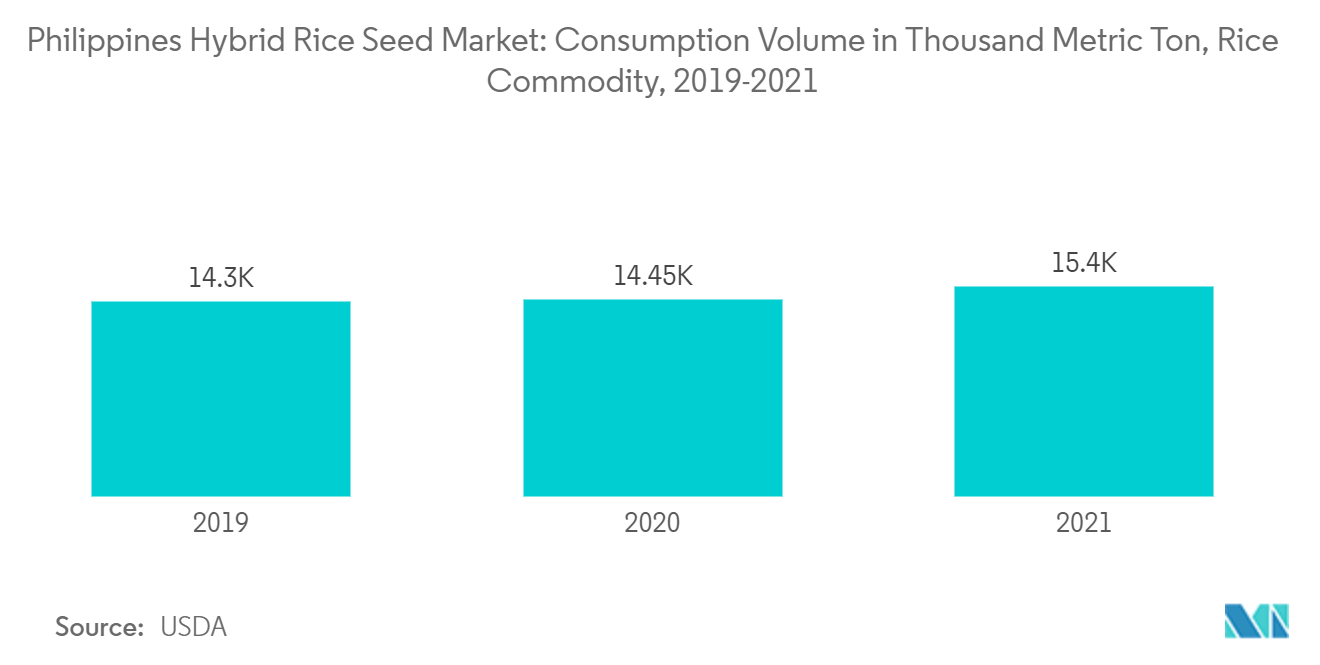
Favorable Government Initiatives is boosting the Production
Rice is the primary food for about 80% of Filipinos and is therefore a key item in the consumption basket of consumers. Since the Government of the Philippines has implemented a food security policy based on rice self-sufficiency, this extra rice production will have to come from using less water and less land, labor, and pesticides. Hybrid rice technology is known as a key approach to increasing rice productivity in the country. Since the government introduced the Hybrid Rice Commercialization Program in 2002, project proponents from both the public and private sectors have proposed various hybrid rice seed varieties. Further, in 2022, after a sixteen-year technical collaboration, SL Agritech Corporation (SLAC) and the Bangladesh Agricultural Development Corporation (BADC) made a memorandum of agreement (MOA) for SL-8H F1 seed production, which further reinforces agricultural technological development between the Philippines and Bangladesh.
Moreover, the General Appropriations Act of 2021 allocated P15 billion (USD 315 million) to the Hybrid Rice Program, more than double last year's approximately P7 billion (USD 147 million). About 1.3 million ha are currently planted with hybrid rice, indicating 27 percent of the rice area planted and 36 percent higher than 2020's level. DA's (Department of Agriculture) program will target 15 provinces that have demonstrated high yields with hybrid rice. Top-performing areas get up to 12 MT/HA matched to the national average of 4 to 5 MT/HA. Additionally, in 2020, a rice-breeding program between China and the Philippines, although not as widely publicized as big-ticket infrastructure projects, has become one of the most significant hallmarks of the two countries' cooperation. China is the world's pioneer in hybrid rice technology and allows the country to feed its growing population even though the nation has only 7% of the world's arable land.
Hence, the Philippines Government programmed aims at utilizing hybrid rice technology as a new approach to growing national rice production and the productivity and keenness of Philippine farmers over the short term, and to achieve national rice self-sufficiency and food security over the long term. As a result of this government initiatives, the production of rice has increased. For instance, according to FAO the production of rice in Philippines in 2021 is 19.9 million metric ton which showed an increase from 18.8 million metric ton in 2019. Therefore, the increased government initiatives is catering to the increased production of rice during the forecast period.
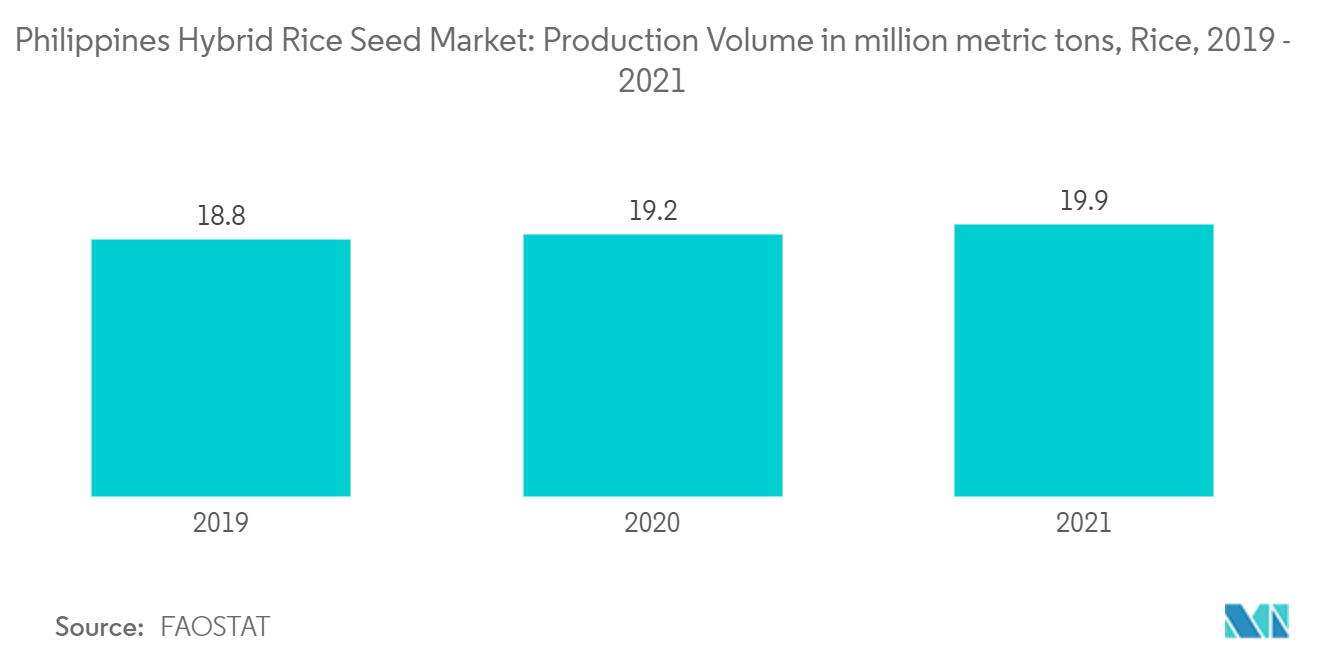
Philippines Hybrid Rice Seed Industry Overview
The Philippine hybrid rice seed market is consolidated, with few players holding the major market share. Bayer AG, Pioneer Hi-Bred Philippines Inc. SL Agritech Corporation, Syngenta Philippines Inc., and Yuan Longping High-Tech Agriculture Co., Ltd. are the significant players observed during the study period. The market studied is anticipated to become more consolidated in the coming years, with substantial players actively participating in various strategies. The key players invest heavily in R&D to launch innovative products per the farmers' requirements.
Philippines Hybrid Rice Seed Market Leaders
-
Bayer Crop Science Inc.
-
Pioneer Hi-Bred Philippines
-
SL Agritech Corporation
-
Syngenta
-
Yuan Longping High-Tech Agriculture Co., Ltd.
*Disclaimer: Major Players sorted in no particular order
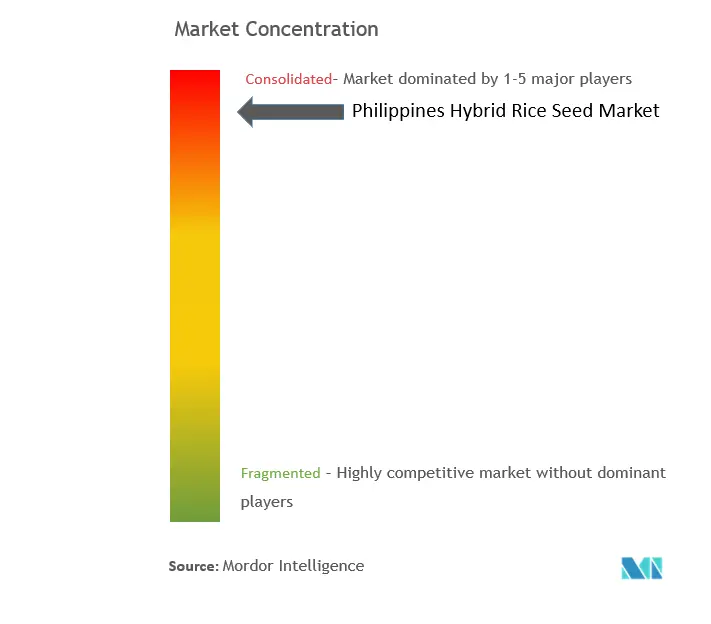
Philippines Hybrid Rice Seed Market News
- July 2022: Department of Agriculture Philippines launched an information system that will hasten rice seed-related transactions and processes. This system is developed by Philippine Rice Research Institute (PhilRice) and the Bureau of Plant Industry (BPI) which includes production planning, field data collection, documentation, and geotagging; monitoring, inventory, and distribution of seed reserve; seed source tracing; application and approval of accreditation and seed certifications; and report generation, among other modules and apps.
- July 2022: The Philippine Rice Research Institute (PhilRice) collaborated with the Department of Agriculture-Regional Field Office and distributed Golden Rice (GR) seeds to farmers in areas of Urdaneta City and Manaoag, Pangasinan.
- February 2022: According to the Department of Agriculture, the mass production of Golden Rice seeds has started in the current year in the country, especially in the vitamin A-deficient provinces, to utilize and promote biotechnology in the Philippines. Philippine Rice Research Institute leads this program.
Philippines Hybrid Rice Seed Market Report - Table of Contents
1. INTRODUCTION
- 1.1 Study Assumptions and Market Definition
- 1.2 Scope of the Study
2. RESEARCH METHODOLOGY
3. EXECUTIVE SUMMARY
4. MARKET DYNAMICS
- 4.1 Market Overview
- 4.2 Market Drivers
- 4.3 Market Restraints
-
4.4 Porter's Five Force Analysis
- 4.4.1 Threat of New Entrants
- 4.4.2 Bargaining Power of Buyers/Consumers
- 4.4.3 Bargaining Power of Suppliers
- 4.4.4 Threat of Substitute Products
- 4.4.5 Intensity of Competitive Rivalry
5. MARKET SEGMENTATION
-
5.1 Type
- 5.1.1 Transgenic
- 5.1.2 Non-transgenic
6. COMPETITIVE LANDSCAPE
- 6.1 Most Adopted Strategies
- 6.2 Market Share Analysis
-
6.3 Company Profiles
- 6.3.1 Bayer AG
- 6.3.2 Bioseed Research Philippines Inc.
- 6.3.3 Syngenta Philippines Inc
- 6.3.4 Advanta Limited
- 6.3.5 Pioneer Hi-Bred Philippines Inc.
- 6.3.6 SL Agritech Corporation
- 6.3.7 SeedWorks Philippines
- 6.3.8 Longping Tropical Rice Development Inc.
- *List Not Exhaustive
7. MARKET OPPORTUNITIES AND FUTURE TRENDS
** Subject To AvailablityPhilippines Hybrid Rice Seed Industry Segmentation
Hybrid rice is a form of rice bred from two very different parents. It can considerably outyield other rice varieties. IRRI (The International Rice Research Institute) is working with its partners to develop new and improved hybrid rice varieties. The Philippine Hybrid Rice Seed Market is segmented by Type (Transgenic and Non-transgenic). The report offers the market size and forecasts in terms of value in USD thousand for all the above segments.
| Type | Transgenic |
| Non-transgenic |
Philippines Hybrid Rice Seed Market Research FAQs
How big is the Philippines Hybrid Rice Seed Market?
The Philippines Hybrid Rice Seed Market size is expected to reach USD 84.68 million in 2024 and grow at a CAGR of 4.72% to reach USD 106.63 million by 2029.
What is the current Philippines Hybrid Rice Seed Market size?
In 2024, the Philippines Hybrid Rice Seed Market size is expected to reach USD 84.68 million.
Who are the key players in Philippines Hybrid Rice Seed Market?
Bayer Crop Science Inc., Pioneer Hi-Bred Philippines, SL Agritech Corporation, Syngenta and Yuan Longping High-Tech Agriculture Co., Ltd. are the major companies operating in the Philippines Hybrid Rice Seed Market.
What years does this Philippines Hybrid Rice Seed Market cover, and what was the market size in 2023?
In 2023, the Philippines Hybrid Rice Seed Market size was estimated at USD 80.68 million. The report covers the Philippines Hybrid Rice Seed Market historical market size for years: 2019, 2020, 2021, 2022 and 2023. The report also forecasts the Philippines Hybrid Rice Seed Market size for years: 2024, 2025, 2026, 2027, 2028 and 2029.
Philippines Hybrid Rice Seed Industry Report
The Philippines Hybrid Rice Seed market is witnessing significant developments and growth trends. The market size and market share are critical indicators of its current state and potential. A comprehensive market analysis reveals the dynamics and factors driving this market, supported by a detailed market report and market research. The industry report provides a thorough industry analysis, offering insights into market forecast and industry overview.
The market growth is propelled by various market leaders who are pivotal in shaping the industry. Market trends indicate a positive trajectory, with market segmentation playing a crucial role in understanding different market segments. The market value continues to rise, reflecting the increasing demand and adoption of hybrid rice seeds.
Industry reports and industry research are essential for understanding the industry's outlook and market predictions. These reports offer valuable industry information, including industry sales, industry size, and industry statistics. The market data is crucial for making informed decisions and strategizing for future growth.
The market review highlights the performance and achievements of key players, while the market outlook provides a glimpse into future opportunities and challenges. The industry trends and market forecast are instrumental in predicting the market's direction and potential.
For those seeking more detailed insights, a report example or a report PDF can be obtained, offering in-depth analysis and data. Research companies play a significant role in compiling and presenting this information, ensuring that stakeholders have access to accurate and up-to-date market information.



